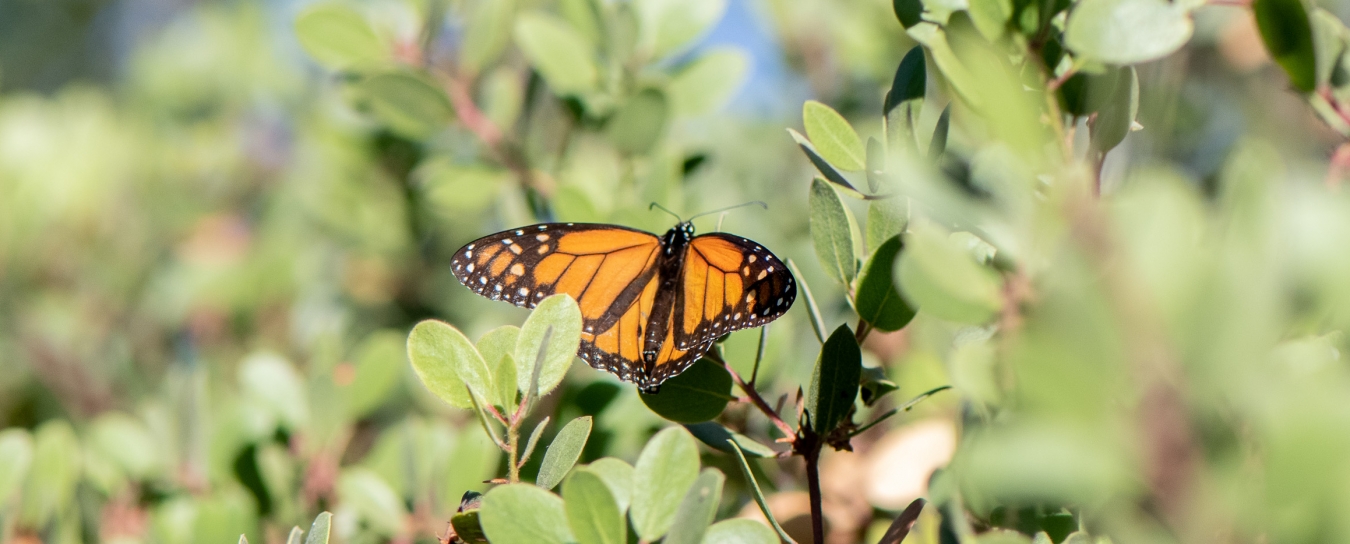
Invertebrates
See our handy guide to critters found in local homes and our Central Coast Butterfly FAQ. Browse the insects and other terrestrial arthropods we’ve identified. Check out local marine invertebrates, particularly bivalve mollusks and intertidal organisms.
- Anthropology
- Rocks & Fossils
- Invertebrates
- Vertebrates
- Botany
- Astronomy
- Fungi
- General
- Recently Asked
What's eating my pomegranates?
These bugs infested my pomegranate tree last year, leaving little drill holes (for eggs?).
What are they and why have I seen them only once in 20 years?
Curator Response
Hi Jana,
Thanks for reaching out about these insects in your tree. You're quite right in calling them bugs, for they do in fact belong to the order known as true bugs. Many folks use the word "bug" loosely, but true bugs are distinguished by having mouthparts for piercing/sucking. So, about those holes...fortunately, they aren't laying eggs inside your fruit. They are using those pierching/sucking mouthparts to drill inside and slurp out a delicious pomegranate smoothie.
Based on your photo, this particular species appears to be Leptoglossus brevirostris, a type of leaf-footed bug. These bugs are named for the leaf-like expansions on their hind legs, and are known to be pests of various fruits and other plant parts. Fortunately, they are not known to transmit any plant diseases, so you can safely share your pomegranates with them if you don't mind having some tiny freeloaders around.
Check out this great page from University of California Agricultural and Natural Resources that explains their pest status in gardens. Although the particular species you observed is not mentioned in the article, it almost certainly has similar habits to the others in the genus Leptoglossus. This resource notes that as the damage they cause is slight, insecticides should be considered a last resort. This is particularly true because the substances which are most effective against leaf-footed bugs are also harmful to beneficial insects. That page also notes that although these insects are native to our area, they have been seen more frequently in recent years. I'd be interested to hear whether you see them again soon, although to date you have only seen them rarely. I'm not aware of anything about their life cycle that would cause them to reappear every 20 years.
Stay curious,
Schlinger Chair and Curator of Entomology Matthew L. Gimmel, Ph.D.


